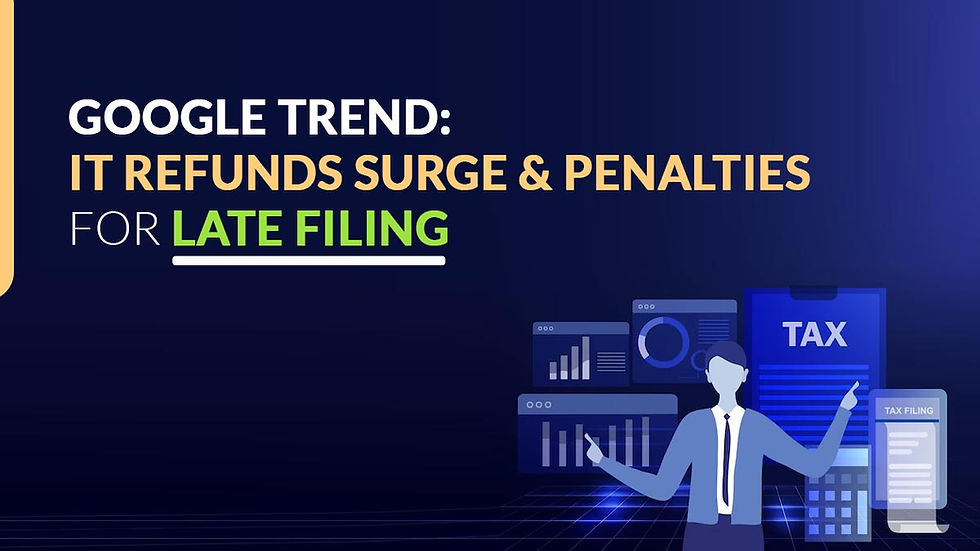CBDT Adds Long-Term Capital Gains Reporting to ITR-1 and ITR-4 for Taxpayers
- Shyam Singh

- May 2
- 2 min read
Updated: May 20

For assessment year 2025-26 (financial year 2024-25), the Income Tax (I-T) Department has reported income tax returns, enabling the filing of returns effective April 1. A provision has been included by the tax department from this year for filing information of long-term capital gains within the ITR-1 and ITR-4 formats.
Before that, the taxpayers' ITR-1 filing would be needed to submit the information of capital gains in the ITR-2 Form separately.
LTCG Filing
For the commonly used segments, ITR-1 Sahaj and ITR-4 Sugam, the I-T Department, which functions under the Central Board of Direct Taxes (CBDT), will shortly operationalise the filing functionalities. An individual who has an income up to Rs 50 lakh, ITR-1 can be furnished along with that it must be filed by those who secures the income via salary, one house property, other sources (interest, etc), long-term capital gains u/s 112A up to Rs 1.25 lakh, and agricultural income up to Rs 5,000.
Individuals, Hindu Undivided Families (HUF), and firms holding a total income up to Rs 50 lakh, carrying income from business and profession, and having long-term capital gains, can file ITR-4, u/s 112A up to Rs 1.25 lakh.
As per a tax expert, earlier, any LTCG u/s 112A, regardless of the amount, required the use of the more complex ITR-2 form. Individuals with the latest amendments can use the simpler ITR-1 (Sahaj) or ITR-4 (Sugam) forms if their LTCG u/s 112A does not surpass Rs 1.25 lakh and they have no capital losses to carry forward or set off.
The same amendment eases the tax filing process, making it more accessible and less demanding for small investors and salaried individuals, thereby inspiring timely and accurate compliance.
Income Tax Department in ITR
Taxpayers, apart from revealing the income earned from distinct sources, are required to furnish the information of any expenses over Rs 2 lakh for travel to a foreign country for self or for any other person in the ITR.
In the tax return, any expense made over Rs 1 lakh on the electricity consumption during the last year must be reported.
The deposit of an amount or aggregate of amounts of over Rs 1 crore in one or more current accounts should be revealed by the taxpayers in the previous year at the time of filing the ITR.
Significance of Form 26AS and AIS
During ITR filing, the summary is available to the taxpayer through the Annual Information Statement (AIS) and Form 26AS, who may accept it as correct or furnish feedback on having discrepancies therein.
AIS is a taxpayer’s financial transaction summary provided in Form 26AS, which has the information of all Tax Deducted or Collected at Source (TDS/TCS), including the other details concerning interest, dividend, and stock market and mutual fund transactions.
As AIS comprises the information of financial transactions from reporting entities, details shall be available only after it gets updated from reporting entities like banks and financial institutions. Likewise, once the I-T Department processes the TDS returns, the Form 26AS shall get updated.
As May 31 is the due date to file TDS returns for the January-March quarter, the updated data is available only in the first week of June. At https://eportal.incometax.gov.in/iec/foservices/#/login taxpayers are enabled to furnish their ITR.




Comments